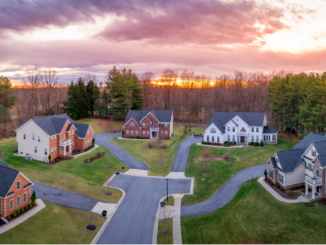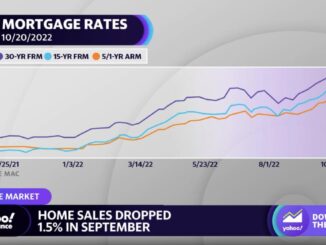2022 has been filled with discussions on homeownership affordability challenges for good reason. The challenges buyers face today are significant: higher interest rates, higher home prices, historically low inventory, increasing costs for labor and materials and supply chain challenges. On the surface, these factors might make the outlook for the housing market look bleak, particularly for first-time homebuyers. Looking deeper, however, it is clear that the market conditions are not so simple. Despite continuing affordability challenges, many Americans still desire and aspire to homeownership. They simply need assistance to clear the hurdles in their path.
The State of the Market
Homeownership affordability is inarguably lower now than it was before the COVID-19 pandemic.
Home prices have increased exponentially over the past two years, with the Federal Housing Finance Agency reporting an 18.3% increase from May 2021 to May 2022. And though the housing supply has steadily increased since February, it still remains tight. This has not only affected home prices but also rent, placing affordability pressure on non-homeowners as well. Interest rates further complicate the market as they have increased from a record low of 2.65% in January 2021 to 5.22% in August 2022.
Perhaps because of this change, only 17% of consumers reported it is “a good time to buy” in Fannie Mae’s June 2022 Home Purchase Sentiment Index. All of these statistics, however, tell only part of the story. Financial obligations, such as debt and lease payments, remain historically low as measured by the Federal Reserve Board’s financial obligations ratio. U.S.
Bureau of Economic Analysis Data indicates that disposable personal income per capita continues to rise and household balance sheets remain strong. Additionally, the labor market is currently very strong. The U.S. Bureau of Labor Statistics reported that at the end of June, the job openings rate (the number of open roles among all positions filled or open) is 6.6%. Further, income growth continues, strengthening the average consumer’s financial position.
Who are First-time Homebuyers
Over time, the average age of the first-time homebuyer rises and falls. Per the National Association of Realtors, the current average first-time homebuyer age is 33 years old. The U.S. Census Bureau reports that more Americans are reaching that prime homebuying age in the next four years than in the last decade. This suggests more first-time homebuyers may be preparing to enter the market than we have seen in quite some time, and the industry needs to be ready to support them.
Obstacles Facing First-time Homebuyers
First-time homebuyers face several unique challenges that make homeownership seem less attainable, but the biggest is affording a down payment. In a December 2021 survey of nonhomeowners by NerdWallet, 36% of respondents said the main reason they do not currently own a home is they lack enough money for a down payment. Low income and credit scores were the next most common reasons at 34% and 32%, respectively.
Only 16% of respondents stated they have no interest in buying, and only 9% cited their main reason as waiting for lower mortgage rates. For many, student loan debt is a significant challenge to accruing enough savings for a down payment. This is particularly a concern of millennials, who are a key first-time homebuyer demographic. In June 2021, 35% of millennials surveyed by the National Association of Realtors stated that student loan debt was a barrier to buying a home.
Another 2021 study by Experian reported that millennials between the ages of 25 and 34 were the most likely to hold student loan debt and that millennials overall owe an average of $40,000. Policymakers continue to wrestle with the challenges of student debt. In August, President Biden issued an executive order that may further remove barriers against homeownership for those repaying student loans.
The white house reported that if all borrowers were to claim the relief provided by the order, up to 43 million borrowers would receive some relief, and approximately 20 million borrowers would have their full remaining balance forgiven. Altogether, potential homebuyers with student loan debt may be better positioned to buy a home than they were prior to the COVID-19 pandemic.
As for the next most-cited barriers to homeownership, low income and credit scores, the market currently suggests trends may be moving in the right direction. Wages are steadily rising, household debt service payments have remained steady for the last year, and the Federal Housing Finance Agency (FHFA) has initiatives under way to validate and approve new credit score models.
Opportunities Remain
If the biggest obstacle to homeownership for most first-time homebuyers is the lack of funds for a down payment, then the first solution is finding low-down payment options. There is a significant difference in saving for a 20% down payment versus a 3 to 5% down payment. Lower down payment programs can assist those interested in homeownership in achieving their dream sooner. For a household earning the national median income, it could take up to 14 years to save a 20% down payment for a single family home of a median price. And during that decade or two, home prices may continue to rise, and the potential buyer will lose the opportunity to build wealth through equity.
Fortunately, there are conventional and government down payment programs for lenders to leverage. Various government agencies, including government-sponsored enterprises (GSEs) Fannie Mae and Freddie Mac, and the Federal Housing Administration, offer low-down-payment programs that can help potential homebuyers enter the market earlier. On the conventional and portfolio side, the private mortgage insurance (PMI) industry plays a critical role in supporting first-time homebuyers and low-income families who are not able to make a 20% down payment.
The industry is well capitalized and takes an active role in working with lenders, the GSEs and the FHFA to identify areas for expansion of the credit box. In the last year, PMI helped more than 2 million homeowners purchase or refinance a mortgage. According to the U.S. Mortgage Insurers trade association, in 2021 nearly 60% of purchase originations with PMI were attributable to first-time homebuyers. Over 40% went to borrowers with income below $75,000 per year. PMI bridges the gap for homebuyers, helping first-time homebuyers and low-income borrowers achieve homeownership earlier than otherwise possible. Not only does PMI serve the lender by supporting low-down payment lending, but it also provides benefits to the homebuyer.
PMI companies offer homebuyer education courses that help prepare the homebuyer for homeownership. Additionally, some mortgage insurance companies offer products that aid the borrower after closing. Programs are available that help offset the costs of a homeowner’s insurance or major appliance repairs, both of which are beneficial for first-time homebuyers.
Looking Forward
The affordability challenges in today’s market cannot be dismissed or ignored, but they are not insurmountable. Overall, many consumers are still better positioned to buy a home today than they were prior to the COVID-19 pandemic, especially with the low-down-payment options available. The PMI industry stands ready to play a critical role in increasing the accessibility, affordability and sustainability of homeownership.
Rohit Gupta is the president and CEO of Enact Mortgage Insurance .
This column, which originally appeared in HousingWire Magazine, does not necessarily reflect the opinion of HousingWire’s editorial department and its owners.
To read the full October/November issue of HousingWire Magazine, click here.
To contact the author of this story:
Rohit Gupta at
To contact the editor responsible for this story:
Sarah Wheeler at sarah@hwmedia.com



